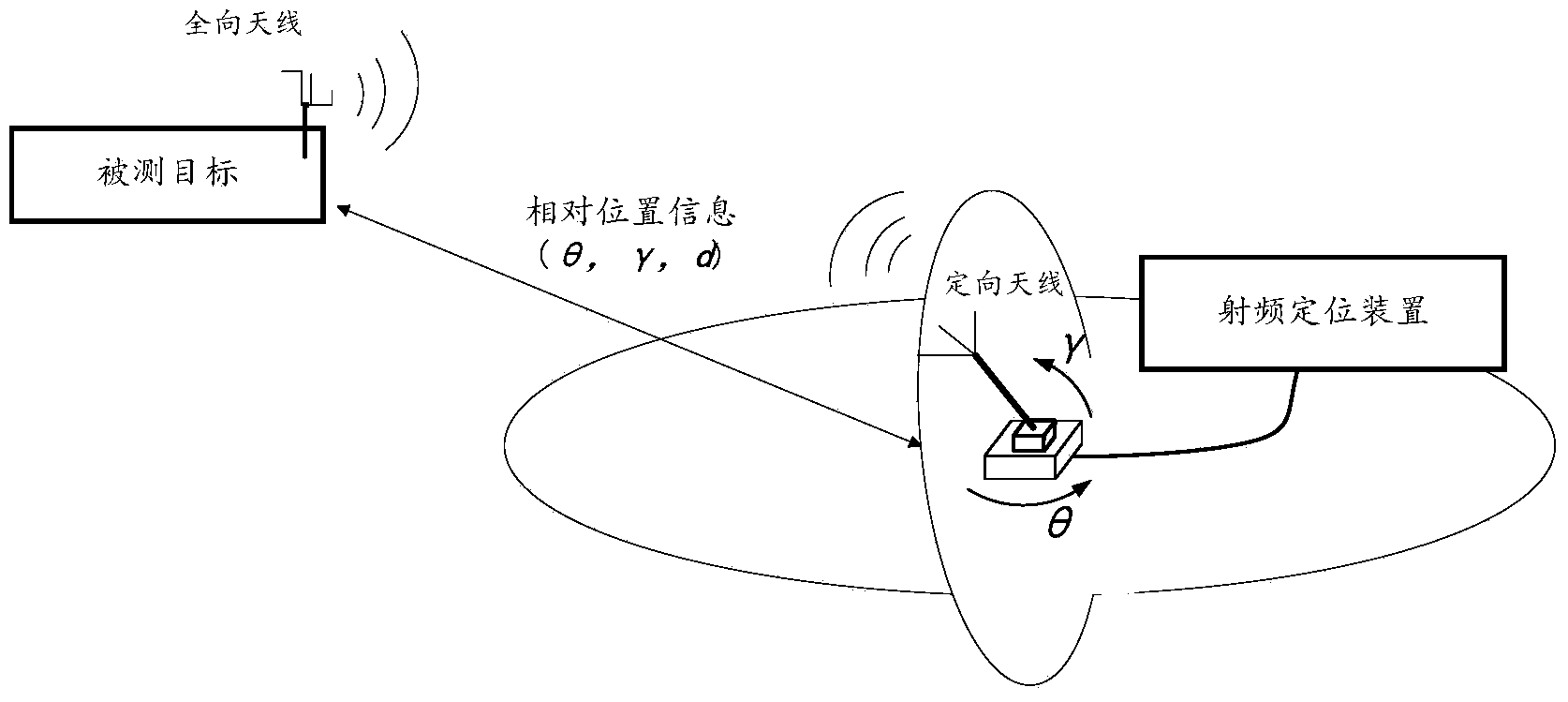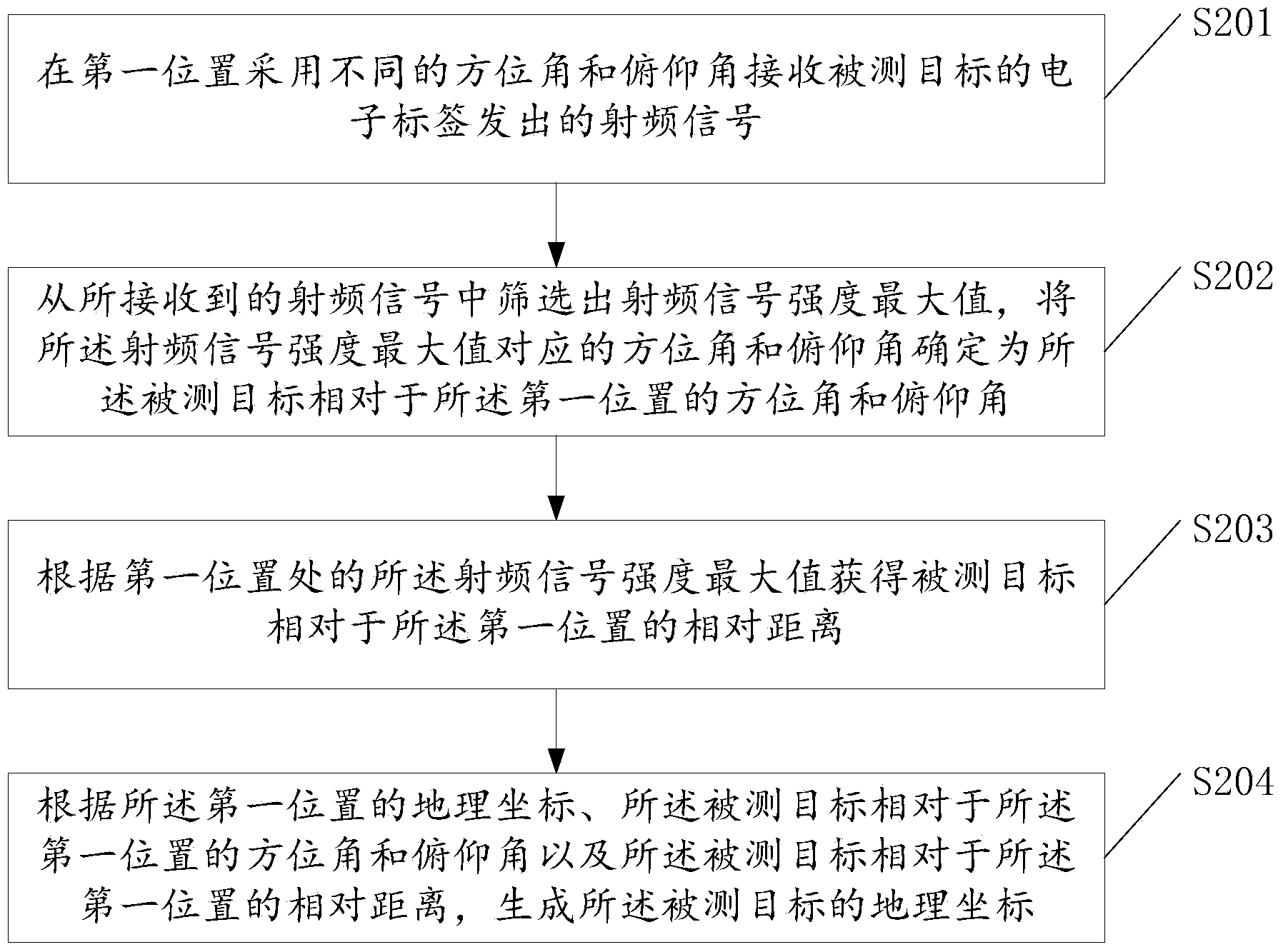Radio frequency positioning method, device and system
A technology of positioning device and positioning method, which is applied in the direction of measuring device, radio wave measuring system, utilizing re-radiation, etc., can solve the problems that it is difficult to determine the azimuth angle and height, can only be used in indoor environment, and determine portable equipment or targets, etc. To achieve the effect of a wide range of application prospects
- Summary
- Abstract
- Description
- Claims
- Application Information
AI Technical Summary
Problems solved by technology
Method used
Image
Examples
Embodiment 1
[0024] This embodiment provides a radio frequency positioning method, which can realize all-round radio frequency positioning of a measured target in a three-dimensional space. This method uses the directional antenna of the radio frequency positioning device to scan the three-dimensional space at various azimuths and elevation angles to search for the radio frequency signal sent by the electronic tag of the target to be measured, and obtain the measured signal according to the strength and direction of the received radio frequency signal. The relative distance between the target and the measurement location and the direction relative to the measurement location, so as to determine the geographical coordinates (longitude, latitude and altitude) of the measured target.
[0025] figure 1 It is an application scenario diagram of this embodiment, and the method of this embodiment will be described in detail below with reference to this diagram. Such as figure 1 As shown, in this...
Embodiment 2
[0041] This embodiment is based on Embodiment 1, and includes not only the actual measurement phase of Embodiment 1, but also the calibration phase before the actual measurement phase, and the process of correcting the measurement results of Embodiment 1. Considering the impact of different measurement environments on the bit error rate, the specific calibration process needs to be carried out according to various measurement environments. This calibration stage is mainly used to measure the bit error rate of different measurement distances in different measurement environments. The relative distance between the measured object and the measurement location measured in a certain measurement environment needs to be corrected by using the calibration data obtained in the calibration stage, and then the geographic coordinates of the measured object are corrected.
[0042] image 3 It is the flowchart of this embodiment. Such as image 3 As shown, the method includes:
[0043] S...
Embodiment 3
[0081] The difference between this embodiment and Embodiment 2 is that in the calibration stage, it is not only necessary to establish the relationship between the received bit error rate, the relative distance of the measured target to the measurement location, and the received signal strength for different measurement environments as illustrated in Embodiment 2. In addition, it is necessary to obtain the measurement deviations of azimuth and elevation angles in different measurement environments during the calibration stage, and use the pre-acquired measurement deviations of azimuth and elevation angles to correct the actual measured azimuth and elevation angles, thereby correcting The geographic coordinates of the measured object.
[0082] Figure 4 It is a detailed flowchart of this embodiment.
[0083] S401: According to different measurement environments, obtain the measurement deviation of pitch angle and azimuth angle in advance;
[0084] Specifically, since measurem...
PUM
 Login to View More
Login to View More Abstract
Description
Claims
Application Information
 Login to View More
Login to View More - R&D
- Intellectual Property
- Life Sciences
- Materials
- Tech Scout
- Unparalleled Data Quality
- Higher Quality Content
- 60% Fewer Hallucinations
Browse by: Latest US Patents, China's latest patents, Technical Efficacy Thesaurus, Application Domain, Technology Topic, Popular Technical Reports.
© 2025 PatSnap. All rights reserved.Legal|Privacy policy|Modern Slavery Act Transparency Statement|Sitemap|About US| Contact US: help@patsnap.com



